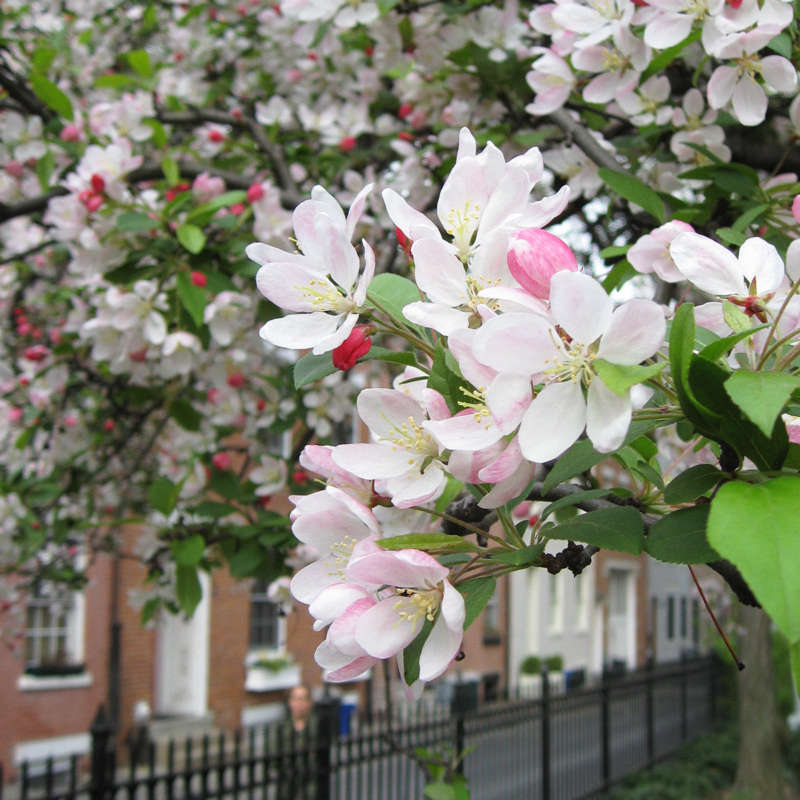

Blooming profusely as daffodils peak, deciduous crabapple trees are spring showstoppers, flowering dependably when planted in full sun. These small fruit trees are wildlife-friendly, offer multi-seasonal bounty, and are resilient friends in a garden or as a container plant.
Was there a crabapple tree in your backyard when you were a child? If so, did you climb its gnarly branches in spring when it was in flower? Did you sit on a low-hanging limb and peer out at the world from behind a fluffy pink or white scrim of blossoms? Did the petals fall like snow when you jumped to the ground?
Few trees are are breathtaking or memorable as flowering crabapples in springtime. Members of the same Malus genus as orchard apple trees, crabapples are known for their year-round appeal in the garden. In seasons when they are not in bloom, their graceful, round canopies offer visual interest; in winter, their tangled limbs look lovely dusted with snow.
Small trees (most species of crabapples are lucky to make it to a height of 25 feet and many are more diminutive), they are an excellent choice if you are looking for a specimen tree in a small garden (in USDA growing zones 4 to 10). Flower color can range from fuchsia to sweet pink to white. Some of our favorites, which produce pink buds that burst open into snowy blossoms, include Malus floribunda and disease-resistant cultivars such as ‘Beverly’, ‘Calocarpa’, ‘Dolgo’, ‘Donald Wyman’, ‘Harvest Gold’, ‘Sparkling Sprite’, and ‘Sweet Sugar Tyme’.
Crabapple fruit is edible and, as it is high in pectin, useful to “add to jams and jellies to reach setting point naturally, writes our contributor Marie Viljoen.